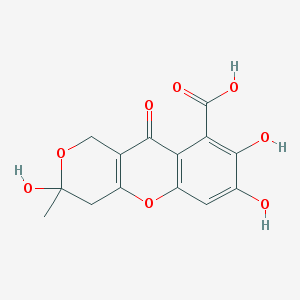
Fulvic acid, a natural compound derived from decomposed plants and microbial activity in soil, has garnered attention for its diverse health benefits. Rich in minerals, trace elements, and organic compounds, fulvic acid's binding properties have become a subject of interest, especially when considering its potential interactions with substances like GcMAF.

Fulvic Acid Composition
To comprehend fulvic acid's binding capabilities, it's crucial to delve into its composition. As a humic substance, fulvic acid forms through the decomposition of plant and microbial matter, resulting in a complex mixture of fulvic acid, humic acid, and other organic compounds. This intricate composition lays the foundation for its multifaceted interactions.
Binding Properties and Chelation
Fulvic acid is renowned for its chelating ability, a process where it forms complexes with metal ions. This property is pivotal in agriculture, where fulvic acid serves as a soil conditioner, enhancing nutrient uptake by plants. In the human body, fulvic acid's chelating capacity extends to mineral absorption. By forming strong bonds with minerals, it may facilitate their transportation and absorption in the digestive system.
Fulvic Acid as More Than a Binder
Describing fulvic acid merely as a binder overlooks its nuanced role in the human body. Beyond binding, fulvic acid engages in complex interactions that contribute to its health-promoting potential. In the digestive system, it aids nutrient absorption by forming complexes with minerals, enhancing their bioavailability. Additionally, fulvic acid is implicated in antioxidant activities, scavenging free radicals and supporting cellular health.
GcMAF and Fulvic Acid Connection
GcMAF, or Gc Protein-derived Macrophage Activating Factor, is an immune system regulator that has gained attention for its potential immunotherapeutic applications. The connection between GcMAF and fulvic acid lies in their complementary roles. Fulvic acid's mineral-chelating capabilities may support GcMAF's functions by ensuring the availability of essential minerals crucial for immune system modulation.
Synergistic Potential for Health
Considering the interplay between fulvic acid and GcMAF introduces an intriguing dimension to their collective impact on health. The binding properties of fulvic acid, specifically in enhancing mineral absorption, may contribute to the optimal functioning of GcMAF in immune system modulation. This potential synergy opens avenues for further research to explore how these two natural compounds collaboratively influence health outcomes.
Ongoing Research and Implications
Research on fulvic acid's health benefits is evolving, encompassing areas such as immune system support, anti-inflammatory effects, and cellular health. The exploration of its interaction with GcMAF adds depth to this narrative, suggesting a potential synergy that warrants continued investigation. Understanding how fulvic acid, with its binding properties, contributes to the efficacy of GcMAF provides a promising direction for future studies.
Navigating Health Considerations
As with any health-related consideration, consulting healthcare professionals is advisable for personalized guidance, especially for individuals with existing health conditions or those incorporating supplements into their regimen. The integration of fulvic acid and GcMAF into health practices holds promise, and ongoing research may illuminate the intricacies of their collaboration in supporting overall well-being.
